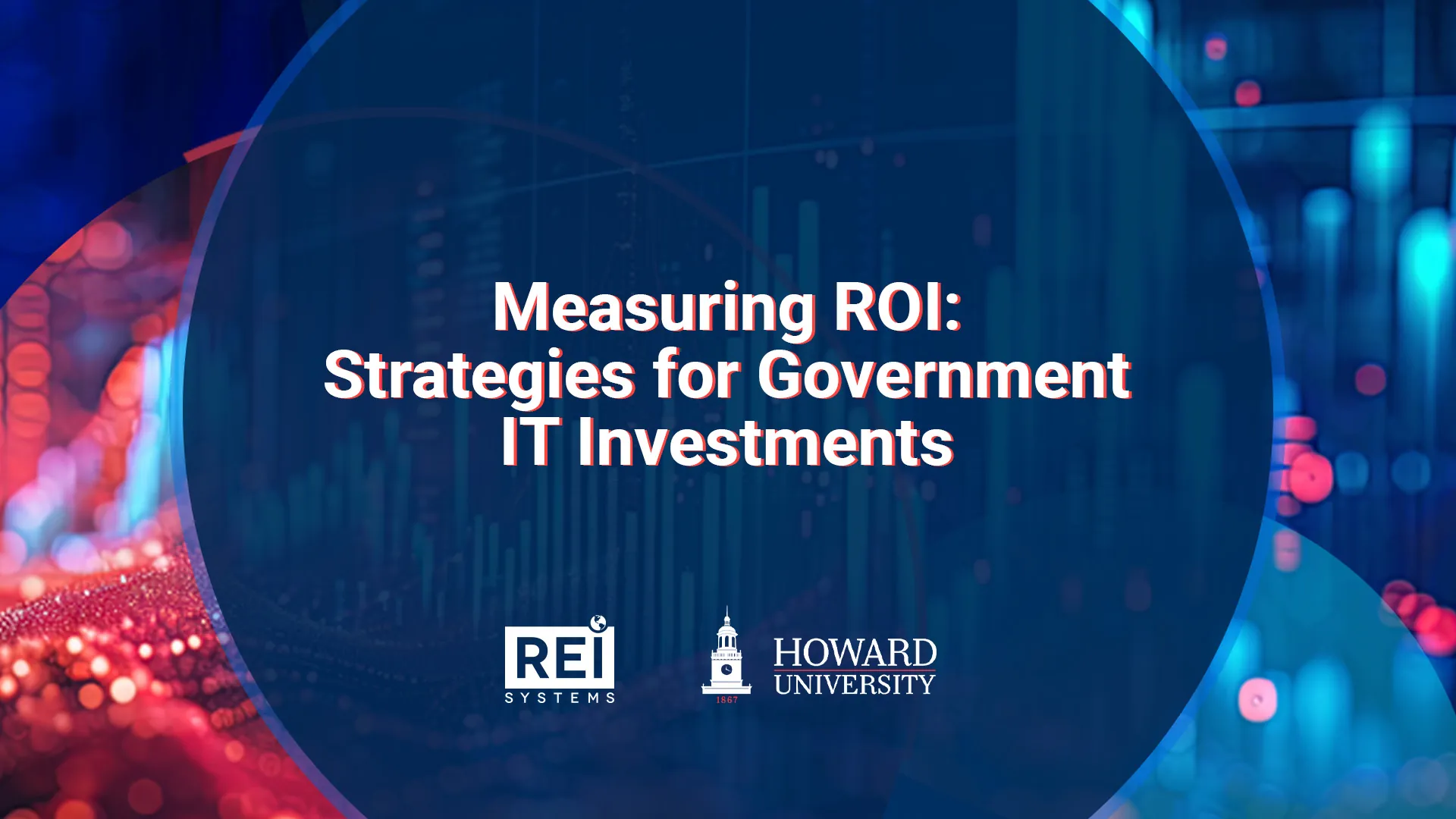Measuring the return on investment (ROI) for IT projects can be tricky, especially as the benefits of new technology aren’t always clear in financial terms. It’s important for government agencies to improve their spending analysis. This helps in making smarter choices, especially when it comes to picking which projects to prioritize and how to balance those against other agency needs. By tackling these issues and exploring effective methods for assessing ROI, agencies can get the most out of their IT investments and serve the public better. Expert panelists shared strategies for evaluating ROI on government IT investments in a recent webinar co-sponsored by Howard University and REI Systems.
Challenges
Measuring ROI for public sector IT investments can be a bit of a puzzle. It’s tough to quantify non-financial benefits like boosted productivity, enhanced services, better user satisfaction, and other perks. Plus, these investments must be evaluated against their broader value beyond simple profits. Balancing these factors is essential for driving meaningful technological improvements.
The Federal Acquisition Service (FAS) grapples with several challenges: changing compliance demands set by legislation, outdated technology that hampers real-time operations, and ongoing security vulnerabilities that require significant modernization investments.
The Internal Revenue Service (IRS) also struggles to measure the ROI of its digital initiatives, especially under the pressure of Congress for modernization. Rajiv Uppal, the IRS’ chief information officer, stressed the importance of using resources wisely to ensure financial responsibility and significant ROI.
Agencies frequently need to move away from outdated practices, such as large contracts, to more modular, iterative approaches. This strategy allows agencies to monitor and assess the impact of each investment in increments, instead of locking into extensive, long-term projects with uncertain outcomes.
Assessments
Agencies have developed proven methods to effectively measure the ROI of their IT initiatives. Florence Kasule, director of procurement at U.S. Digital Service, stressed the need to align IT projects with organizational goals and adopt modular methods to maintain precise project scopes. This strategy enhances the assessment of IT investments’ ROI. “All IT investments have to clearly demonstrate that the investment is needed to help meet an agency’s strategic goal and mission,” she said.
April Kestyn, director of IT services at the General Services Administration (GSA), said using methods to match IT investments with strategic goals and enhance user experience has been successful. This approach focuses on ROI and aligns with wider organizational aims, achieving significant results and addressing compliance and tech issues. She also stressed redefining success to better measure how small IT investments can lead to big returns. “We’ve been doing some smart IT investments by using these processes and metrics,” Kestyn said. “I think one of the really amazing things is that they’ve been able to double their revenue over the last few years but keep their staffing flat.”
The IRS is modernizing its operations to meet congressional mandates and ensure a meaningful ROI. It’s focused on initiatives that not only provide financial accountability but also improve service delivery, Uppal said. The human experience is what guides investments made by the IRS, he added. “It’s about the impact of the work we do that helps us decide where and how to invest,” Uppal said. “It’s about, what is the experience our citizens are going to have that helps us decide where and how we should be spending the money Congress has given us.”
The National Institutes of Health Information Technology Acquisition and Assessment Center (NITAAC) within the National Institutes of Health (NIH) uses cost savings and cost avoidance as metrics to measure ROI for its government-wide acquisition contracts (GWACs). “The cost savings would equal ROI,” said Ed Wilgus, NIH acquisition officer. “There’s roughly a 27% savings from published price lists.” Measuring these areas allows agencies to see the financial impact of their IT investments directly, helping them make informed decisions and prioritize future projects with the best potential returns, he said.
REI Systems’ comprehensive ROI model is designed to yield returns of 10 to 20 times the initial investment, said Jeff Myers, senior director at the company. This model actively guides agencies through holistic assessments, emphasizing the evaluation of the entire project lifecycle. It covers the initial investment, potential savings in IT operations and maintenance, and improvements in programs and business processes.
“This ROI model is intended to try and help agencies get better opportunities to get funding for valuable IT projects,” Myers said. “But also to manage those projects in such a way that they maximize the return on investment as they go along.”
Effective IT solutions improve development, acquisitions, and overall business operations. Agencies should focus on increasing efficiency and improving performance to meet broader goals. REI is skilled at determining if low-code platforms or user-centric designs can boost productivity and reduce costs, helping agencies stay flexible and quickly adapt to new regulations and innovations.
Understanding the total monetary value involves comparing investment size, ongoing operational costs, and their impact on business outcomes or mission objectives. This comprehensive analysis helps ensure informed decision-making and maximizes the value of government IT investments.
“The kind of returns you’re looking for depend upon your specific agency,” Myers said. “But what we found is that a number of these play into big improvements in mission, performance, and productivity.”




